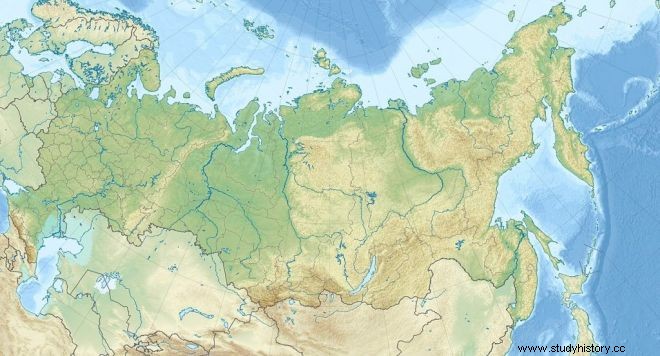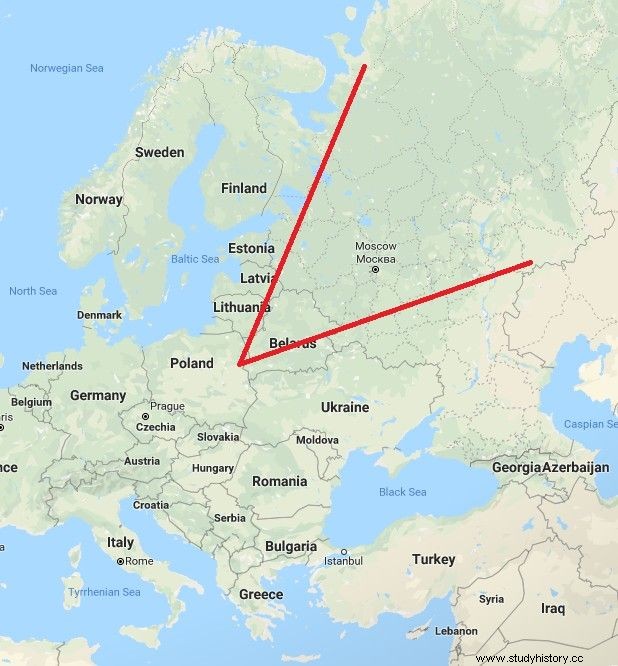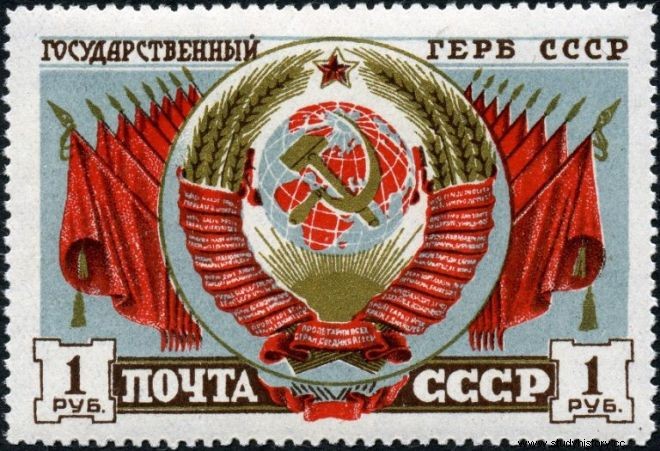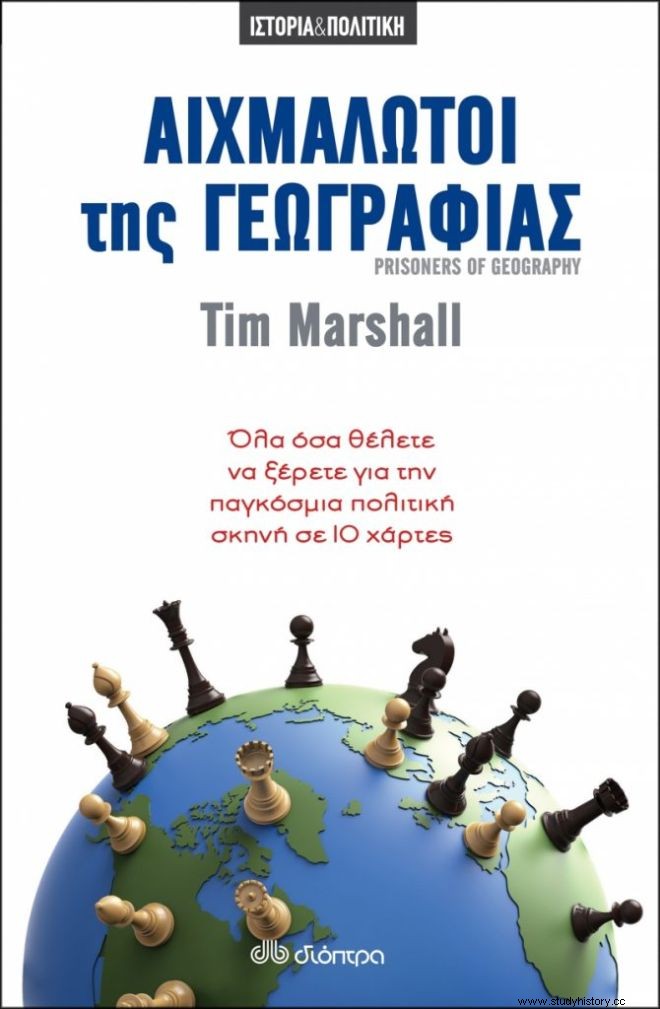Do you think the Soviet Union invaded Afghanistan to spread Marxism? Do you think the Czars and Stalin had to deal with a completely different world map? Do you think Putin seized Crimea to protect the Russian-speaking people of the region? In all probability, none of the above is true and they are only a few historical examples, which to understand we must connect geography with politics.
Russia is vast. Inexhaustible. Infinite. Infinity means 16,000,000 square kilometers and 11 time zones. Even today it takes six days to cross it by train. It is the largest country in the world, twice the size of the US or China, five times the size of India and seventy times the size of the UK. However, it has a relatively small population of 144 million, smaller than that of Nigeria or Pakistan.

For several centuries now the Russian leadership has had its mind in all directions, but has focused more on the west, as its Asian side is sparsely populated and virtually protected by the immensity of its territory. In the West, Vladimir Putin has a... pizza on his mind. Specifically, the shape of a triangular slice of pizza. The thin edge of this piece is Poland. At this point, the vast North European Plain starts north from the Baltic Sea and continues south reaching the Carpathian Mountains.
From Russia's point of view, this fact is a double-edged sword. Poland is a relatively narrow corridor where Russia could line up its armed forces, preventing an enemy advance on Moscow. But from there on the triangular flat piece starts to grow. Approaching the Russian border, its width exceeds 3,000 kilometers, and even for a large army, defense along this entire line would be a particularly difficult task.
However, Russia has never been conquered from this direction, thanks in part to its strategic depth. By the time an army reaches Moscow it has been forced to develop supply lines which are impossible to maintain, a mistake made by Napoleon in 1812 and repeated by Hitler in 1941.

At the end of the B" B.P. by 1945, the Russians were in control of the previously German-conquered territories in Central and Eastern Europe, some of which became part of the USSR, as it slowly began to resemble the former Russian Empire. In 1949 some nations from Europe and North America founded NATO for the defense of Europe and North America. In response, most of the communist states of Europe—under Russian leadership—formed the Warsaw Pact, which was supposed to be made of steel, but by the early 1980s it was beginning to rust, and after the fall of the Berlin Wall the 1989 became a wreck.
President Putin is not a big fan of the last Soviet President, Mikhail Gorbachev. He accuses him of undermining Russia's security and has described the breakup of the former Soviet Union in the 1990s as the "great geopolitical disaster of the century". Since then, Russians have watched nervously as NATO slowly but steadily expanded, incorporating countries Russia claims it was promised would not join:the Czech Republic, Hungary, Poland, Bulgaria, the Baltics Countries, Romania, Slovakia, and Albania. NATO maintains that no such guarantee had been given.
Russia, like all great powers, thinks in the depth of a hundred years and understands that in that time period anything can happen. A century earlier who could have predicted that the American armed forces would be encamped a few hundred kilometers away from Moscow, in Poland and the Baltic states? Just fifteen years from 1989, most of the former Warsaw Pact members had joined NATO or the European Union. This is something that never leaves the minds of the rulers in Moscow.
In the 20th century, communist Russia created the Soviet Union. Behind the words of the slogan "Workers of the World Unite", the USSR was nothing more than the Russian Empire in a larger version. After B" P.P. it stretched from the Pacific to Berlin and from the Arctic to the border with Afghanistan—an economic, political, and military superpower that only the US could look in the eye.

Towards the end of the last century, over-expansion, spending more money than was available, reckless economics in a land not designed for people, and defeat in the mountains of Afghanistan led to the fall of the USSR. The Soviet invasion of Afghanistan in 1979, to support the communist Afghan government against anti-communist Muslim insurgents, was never intended to bring the benefits of Marxism-Leninism to the people of Afghanistan. The goal has always been for Moscow to ensure control of the region to prevent it from passing to anyone else.
The invasion of Afghanistan had given life to the great Russian dream of having what it had never had:A port in warm waters where the water does not freeze in winter, with free access to the world's main trade routes. Arctic ports Vladivostok, Russia's largest port in the Pacific Ocean, has been blocked by ice for about four months and is surrounded by the Sea of Japan, which is controlled by Japan. This does not simply inhibit the flow of trade. It prevents the Russian fleet from acting as a planetary power.
However, due to the imposing plains of Kandahar and the Indus mountains, no power has ever been victorious in Afghanistan, thus earning it the title "the Graveyard of Empires". Russia's dream of free warm sea lanes has since begun to fade and may be more distant today than it has been in the last 200 years. This lack of a warm port with direct access to the oceans has always been Russia's Achilles heel, of equal strategic importance to the North European Plain. Russia is at a geographical disadvantage and the only thing saving it from being a far inferior power is the country's oil and natural gas.
When the Soviet Union dissolved, it was divided into fifteen countries. If we take the long historical view, then there is still much at stake in each of the states that once made up the USSR, along with a few more states that were once part of the Warsaw Pact. Pro-Western former Warsaw Pact countries include Georgia, Ukraine and Moldova, which would like to join NATO or the EU but are prevented by their geographic proximity to Russia and because they all have Russian troops or pro-Russian paramilitaries organizations in their territory. Any of the three joining NATO could trigger war.
All this explains why in 2013 President Putin was left with no other choice — he had to annex Crimea, which contained not only many Russian-speaking Ukrainians but, above all, the port of Sevastopol. It was precisely this geographic imperative, as well as NATO's entire eastward turn, that Putin had in mind when, in a speech on annexation, he declared that “Russia found itself in a position from which it could not retreat. If you push a spring to its limits, it will spring back with momentum. You must always remember this".
Putin would not be the one to "lose Crimea" and with it the only significant warm water port to which Russia had access. No one came to Ukraine's aid as it was losing territory the size of Belgium. Ukraine and neighboring countries knew the geographical truth:Unless you are a member of NATO, Moscow is too close and Washington too far.
President Putin reads history and seems to have learned the lesson of the Soviet era, when Russia was overextended. From Peter the Great to Stalin to today's Putin, every Russian leader faces the same problems. It doesn't matter in the slightest whether the ideology of the rulers is tsarist, communist or pro-capitalist — the harbors are still frozen and the North European Plain remains flat. Nation-state border lines aside, the map that Ivan the Terrible saw half a millennium ago is the same map that Vladimir Putin sees today.
PS:Want to learn more about how geography influences contemporary international politics? The answers can be found in Tim Marshall's book "Prisoners of Geography", translated by S. Katsoula.

